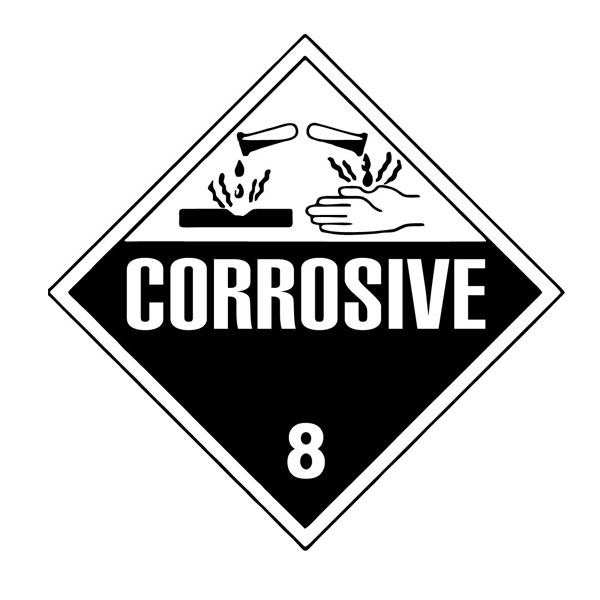Citric Acid
Structure

2-Hydroxy-1,2,3-propanetricarboxylic acid
3-Carboxy-3-hydroxypentane-1,5-dioic acid
Hydrocerol A
Citro
Chemfill
Aciletten
Formula: (HOOCCH2)2C(OH)COOH (C6H8O7)
Description: Colorless crystals, or white, granular to fine crystalline powder, deliquescent in moist air.
Uses: Acidulant in beverages, to adjust ph of foods and as a synergistic antioxidant, in processing cheese, used in beverages, jellies, jams, preserves and candy to provide tartness, in special inks, in electroplating, in the manufacture of alkyd resins, in esterified form as plasticizer, foam inhibitor, in the manufacture of citric acid salts, as mordant to brighten colors.
Registry Numbers and Inventories.
| CAS | 77-92-9 |
| EC (EINECS/ELINCS) | 201-069-1 |
| EC Class | irritant |
| EC Risk Phrase | R 36 |
| EC Safety Phrase | S 26 |
| ENCS (MITI) | 2-1318 |
| RTECS | GE7350000 |
| RTECS class | Agricultural Chemical and Pesticide (A); Drug (D); Primary Irritant (S) |
| UN (DOT) | 1759 |
| Merck | 13,2350 |
| Beilstein ref. | 4-03-00-01272 |
| Listed on the Toxic Substancs Control Act (TSCA). | |
| Listed on Canadian Domestic Substances List (DSL). | |
| Listed on Australian Inventory of Chemical Substances (AICS). | |
Properties
| Formula mass | 192.13 |
| Melting point, °C | 153 |
| Vapor pressure, mmHg | < 0.1 hPa (20 °C) |
| Vapor density (air=1) | N/R |
| Density | 1.665 |
| Solubility in water | 59 g/100ml |
| Viscosity | 6.5 cp 50% aq soln @ 25°C |
| Acid/Base | 2.93 (pka) |
| Heat of combustion | -474.5 kcal/mole |
| Odor threshold | Odorless |
Hazards and Protection.
| Storage | Store in a tightly closed container. Store in a cool, dry, well-ventilated area away from incompatible substances. Store protected from moisture. |
| WHMIS | E – Corrosive material |
| Handling | Wash thoroughly after handling. Use with adequate ventilation. Minimize dust generation and accumulation. Avoid contact with eyes, skin, and clothing. Keep container tightly closed. Avoid ingestion and inhalation. Do not allow contact with water. Keep from contact with moist air and steam. |
| Protection | Eyes: Wear appropriate protective eyeglasses or chemical safety goggles as described by OSHA’s eye and face protection regulations in 29 CFR 1910.133 or European Standard EN166. Skin: Wear appropriate protective gloves to prevent skin exposure. Clothing: Wear appropriate protective clothing to prevent skin exposure. |
| Respirators | Follow the OSHA respirator regulations found in 29CFR 1910.134 or European Standard EN 149. Always use a NIOSH or European Standard EN 149 approved respirator when necessary. |
| Small spills/leaks | Vacuum or sweep up material and place into a suitable disposal container. Very fine particles can cause a fire or explosion. Eliminate all ignition sources. Clean up spills immediately, using the appropriate protective equipment. Avoid generating dusty conditions. Remove all sources of ignition. Provide ventilation. Spill may be neutralized with lime. Do not get water inside containers. |
| Stability | Stable under normal temperatures and pressures. |
| Incompatibilities | Oxidizing agents, sulfides (inorganic, e.g. ferric sulfide, lead sulfide, sodium sulfide), metal nitrates, alkali carbonates, alkalis, potassium tartrate, acetates, bicarbonates. |
| Decomposition | Carbon monoxide, irritating and toxic fumes and gases, carbon dioxide. |
| Other hazards | Will attack some metals like brass or copper forming citrate complexes. |

Fire.
| Flash Point,°C | 286 | |||
| Autoignition, °C | 345 | |||
| Upper exp. limit, % | 4.8 | |||
| Lower exp. limit, % | 1.8 | |||
| Fire fighting | Wear a self-contained breathing apparatus in pressure-demand, MSHA/NIOSH (approved or equivalent), and full protective gear. During a fire, irritating and highly toxic gases may be generated by thermal decomposition or combustion. This material in sufficient quantity and reduced particle size is capable of creating a dust explosion. To extinguish fire use water spray, dry chemical, carbon dioxide, or chemical foam. Use agent most appropriate to extinguish fire. Do NOT get water inside containers. | |||
| Fire potential | Slight – when heated. | |||
| Hazards | Melts and decomposes. The reaction is not hazardous. | |||
| Combustion products | Fire may produce irritating, corrosive and/or toxic gases. | |||
| NFPA | Health:2 Flammability:0 Reactivity:0 Special:0 | |||
Health
| Exposure effects | Repeated exposure may cause sensitization dermatitis. |
| Ingestion | May cause gastrointestinal irritation with nausea, vomiting and diarrhea. Excessive intake of citric acid may cause erosion of the teeth. |
| Inhalation | Causes respiratory tract irritation. |
| Skin | Causes skin irritation. May cause skin sensitization, an allergic reaction, which becomes evident upon re-exposure to this material. |
| First aid | |
| Ingestion | Do NOT induce vomiting. If victim is conscious and alert, give 2-4 cupfuls of milk or water. Never give anything by mouth to an unconscious person. Get medical aid. |
| Inhalation | Remove from exposure to fresh air immediately. If breathing is difficult, give oxygen. Get medical aid. DO NOT use mouth-to-mouth respiration. If breathing has ceased apply artificial respiration using oxygen and a suitable mechanical device such as a bag and a mask. |
| Skin | Flush skin with plenty of soap and water for at least 15 minutes while removing contaminated clothing and shoes. Get medical aid if irritation develops or persists. Wash clothing before reuse. |

Transport
| UN number | 1759 |
| Response guide | 154 |
| Hazard class | 8 |
| Packing Group | I; II; III |
| USCG CHRIS Code | CIT |
| USCG Compatatibility Group | 4 Organic acids |
